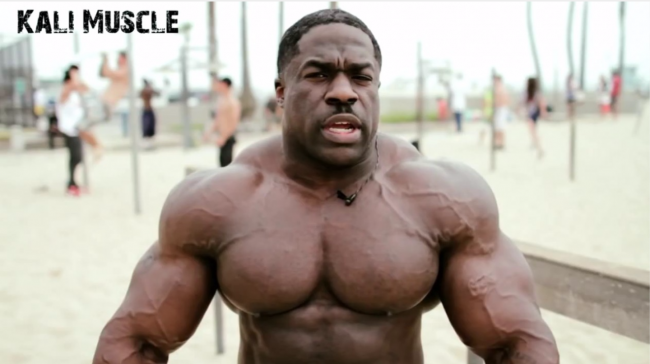
Bone building reaches a peak during adolescence but then slows after age 25. In addition to this natural bone loss, we’re less likely to perform high-impact, bone-stimulating exercises (such as jumping) after age 50. This adds up to an increased risk of osteoporosisand bone breaks and fractures.
Fortunately, you can build stronger bones at any age.
A recent study published in the American Journal of Health Promotion shows that people who jumped 10 times twice daily increased bone density by .5 percent compared with those who didn’t and lost about 1.3 percent. (Note: the study did not include women with osteoporosis; jumping is not recommended in cases of weak bones.)
Experts offer these seven easy tips for men and women to keep bones strong throughout their lives:
1. Snack on yogurt and other calcium-rich foods. Including yogurt, cottage cheese and other low-fat dairy foods adds bone-strengthening calcium to your diet. “In addition to dairy products, choose fish with bones such as salmon, sardines or whitebait,” says registered dietitian Laura Jeffers.
(MORE: Fiftysomething Diet: The 4 Best Foods for Your Bones)
For additional benefits, serve these foods with a side of dark leafy green vegetables or broccoli, which also contain calcium. Other bone-building snacks include almonds, dried figs, calcium-fortified tofu and, if you prefer non-dairy, soy milk.
2. Take a hike. Try to engage in at least 30 minutes of exercise every day, by jogging, brisk walking or aerobics — at whatever level of ability, says Susan Randall, of the National Osteoporosis Foundation (NOF). “As you build stamina, increase the duration and intensity of your exercise,” she says.
To see real improvements in bone density, you need to push your intensity, says Cleveland Clinic physical therapist Maribeth Gibbon. “Increasing your pace for short intervals or going up and down hills will place appropriate forces on your bones.”
Alternate higher-intensity exercises two to three days a week with lower-intensity activities four to five days a week for best results.
3. Lift weights. “All women begin to lose bone mass after menopause,” says Randall, “so the stronger the muscle and the stronger the bone mass before menopause, the better.” Men should lift weights, too.
(MORE: How to Stay Healthy After Menopause)
Resistance exercise requires muscular strength, which improves muscle mass and strengthens and supports bone. Examples of resistance training tools include free weights, wrist weights, weighted vests, exercise bands and resistance machines found at gyms and health clubs. Strive for two to three resistance training workouts a week.
4. Consider a supplement. Your calcium needs increase with age, making it a challenge to take in enough calcium through food alone. The U.S. recommended daily allowance for calcium is 1,000 mg a day during your 20s, 30s and 40s.
After menopause, most women need 1,000 to 1,500 mg a day unless they take hormone therapy, says Jeffers. Men between 50 and 70 years old need 1,000 mg a day; men over 70 need 1,200 mg.
“And since your body absorbs only 500 mg of calcium at a time, divide your dosages out over the course of the day,” Jeffers says. Check with your doctor before starting supplements to find out what amount is right for you.
5. Take a daily “D.” To help absorb calcium, most adults need 1,000 to 2,000 IU of vitamin D daily, saysDr. Andrea Sikon of Cleveland Clinic. “Combined calcium-vitamin D pills usually do not meet this requirement. And most of us who live north of Atlanta do not get enough vitamin D the old-fashioned way — from the sun. Taking a vitamin D supplement ensures you meet your daily needs.”
Even if you take medications such as bisphosphonates (e.g. Fosamax), you still need vitamin D and calcium as building blocks, says Sikon.
6. Stomp your feet. Similar to the noted benefits of jumping for bone density, simply stomping your feet can also help increase bone density in your hips, says Gibbon.
“Do four stomps on each foot twice a day with enough pressure to crush a can,” she says.
Make it a habit to stomp on cans before you toss them into the recycle bin.
Gibbon recommends performing exercise that is site-specific, meaning it must target the areas most prone to fracture: spine, hips and wrists. Push-ups and planks work the wrists and the NOF recommends theseexercises to target the spine.
7. Stretch it out. Round out your workouts with stretching to help avoid a hunched-over posture down the road. “Posture, balance, flexibility, and spine strengthening exercises can help you with better alignment of your body now and in the future,” says Randall.
Lengthening tight muscles reduces back pain and promotes good spinal mechanics and posture, says Gibbon.
Muscles that are commonly tight include those you use to arch your back (spinal extensors); raise and rotate your shoulders (shoulder elevators and external rotators); lift your knees (hip flexors) and pull your feet toward your body (ankle dorsiflexor). P
Perform stretches slowly and smoothly, “to a point of stretch, not pain,” Gibbon advises. For maximum benefit, do stretches once or twice a day, holding each stretch for 20 to 30 seconds.
Next Avenue contributor Linda Melone is a California-based freelance writer specializing in health, fitness and wellness for women over 50.









